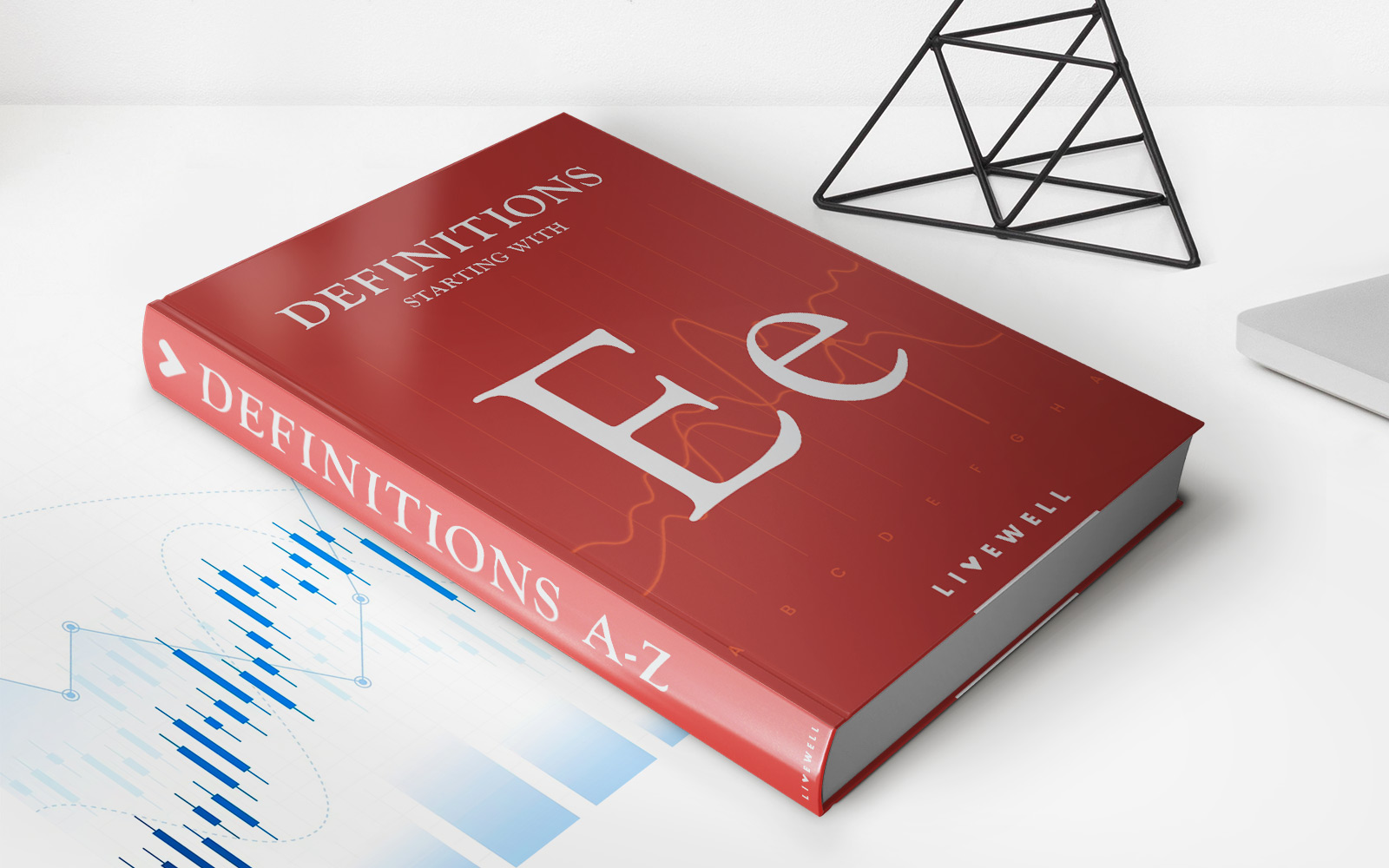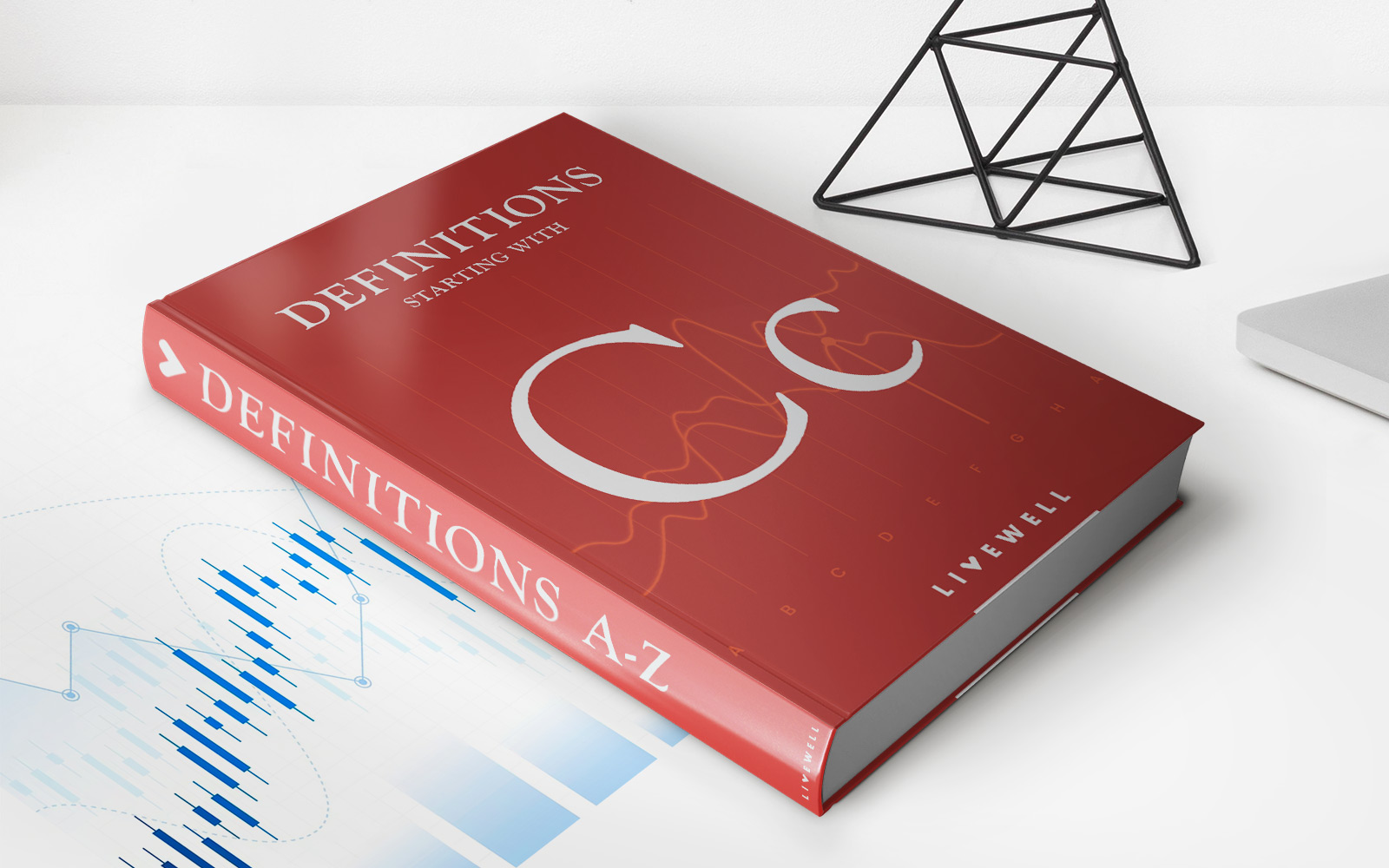

Finance
What Are The Requirements For A Student Loan?
Published: November 3, 2023
Explore the requirements for obtaining a student loan to finance your education. Find out what documents and qualifications are needed for this financial assistance.
(Many of the links in this article redirect to a specific reviewed product. Your purchase of these products through affiliate links helps to generate commission for LiveWell, at no extra cost. Learn more)
Table of Contents
Introduction
Obtaining a higher education can open up countless opportunities for students. However, the rising costs of tuition, books, and living expenses can put a strain on financial resources. That’s where student loans come in. A student loan is a type of financial aid that helps students pay for their education-related expenses. It serves as a lifeline for many students who are unable to afford the costs up front.
Understanding the requirements for a student loan is crucial for those seeking financial assistance. These requirements vary depending on the type of loan, whether it is a federal loan, a private loan, or a state-sponsored loan. This article will outline the general eligibility criteria and provide a comprehensive guide to help students navigate the process.
Before taking the plunge into the world of student loans, it’s important to note that borrowing money comes with responsibilities. It’s essential to fully comprehend the terms and conditions of the loan, including repayment options, interest rates, and any additional fees.
In this article, we will explore the key requirements for obtaining a student loan, including enrollment status, credit history, income and employment, co-signers, loan limits, interest rates, repayment options, and the application process. Armed with this knowledge, students can make informed decisions about pursuing a loan that best fits their needs.
So, let’s dive into the details of the different requirements for acquiring a student loan.
Eligibility Criteria
Before applying for a student loan, it’s important to understand the basic eligibility criteria set by lenders or loan providers. While specific requirements may vary depending on the type of loan, there are a few common factors that are typically considered when determining eligibility.
1. Citizenship or Residency Status: In most cases, student loan borrowers must be either U.S. citizens, permanent residents, or eligible non-citizens. Some loan programs may have additional requirements for international students, so it’s important to check with the loan provider for specific eligibility criteria.
2. Age: Borrowers must be at least 18 years old to apply for a student loan. This is to ensure that the borrower is legally able to enter into a loan agreement.
3. Enrollment in an Eligible Institution: To qualify for a student loan, you must be enrolled as a student at an eligible educational institution. This includes colleges, universities, vocational schools, and trade schools that are recognized by the loan provider or the U.S. Department of Education.
4. Academic Progress: Most student loan programs require borrowers to maintain satisfactory academic progress. This typically means that you must be enrolled at least half-time and make satisfactory progress towards completing your program of study.
5. No Defaulted Student Loans: If you have previously borrowed student loans, you must not be in default on any of those loans. Defaulting on a loan occurs when you fail to make payments as scheduled.
6. Selective Service Registration: Male borrowers between the ages of 18 and 25 must register with the Selective Service System to be eligible for federal student loans. This requirement applies to U.S. citizens and eligible non-citizens.
7. Other Requirements: Some loan programs may have additional criteria, such as maintaining a minimum GPA or meeting specific academic or financial need requirements. It’s crucial to review the terms and conditions of each loan program to ensure you meet all the necessary criteria.
Remember that meeting the eligibility criteria does not guarantee approval for a student loan. Loan providers will also consider factors such as credit history, income, and the availability of a co-signer (if necessary). Understanding these additional requirements will help you determine your chances of successfully obtaining a student loan.
Enrollment Requirements
Enrollment requirements play a significant role in determining eligibility for student loans. Lenders want to ensure that borrowers are actively pursuing their education at an accredited institution. Here are the key factors to consider regarding enrollment requirements:
1. Accredited Institution: To qualify for a student loan, you must be enrolled in a college, university, trade school, or vocational institution that is accredited by a recognized accrediting agency. Accreditation ensures that the institution meets certain educational standards, making it eligible for federal and private student loan programs.
2. Full-Time or Half-Time Enrollment: Most student loan programs require borrowers to be enrolled at least half-time to be eligible. Half-time enrollment typically means carrying at least six credit hours per semester. Full-time enrollment usually requires carrying 12 or more credit hours per semester. However, each loan program may have its own criteria for what constitutes full-time or half-time enrollment.
3. Degree or Certificate Program: Student loans are typically available for degree-seeking programs or approved vocational or trade certificate programs. The program you are enrolled in must be recognized by the loan provider. It’s important to check if the specific program you are pursuing is eligible for student loans.
4. Enrollment verification: When applying for a student loan, you will need to provide proof of enrollment. This can be done through an official letter or form provided by your educational institution. The verification should include details such as the school’s name, your program of study, and the anticipated graduation date.
5. Enrollment status changes: If you experience any changes in your enrollment status, such as taking a hiatus from school or changing from full-time to part-time, it’s important to inform your loan servicer as it may impact your loan repayment schedule or eligibility for loan benefits in the future.
It’s crucial to stay informed about the specific enrollment requirements set by the loan program you are interested in. Additionally, be aware that dropping below the required enrollment status may affect your loan disbursement and could result in you being responsible for immediate loan repayment.
By understanding and meeting the enrollment requirements, you can ensure that you remain eligible for student loans throughout your educational journey and successfully secure the financial support you need to achieve your academic goals.
Credit History
When it comes to student loans, your credit history is an important factor that lenders consider to assess your eligibility for borrowing funds. Your credit history provides insight into your past financial behavior and helps lenders determine the level of risk associated with lending to you. Here’s what you need to know about credit history and its impact on student loans:
1. Credit Score: One of the key components of your credit history is your credit score. It is a numerical representation of your creditworthiness, based on factors such as your payment history, credit utilization, length of credit history, types of credit accounts, and recent credit inquiries. A higher credit score indicates a lower risk, making you more likely to be approved for a student loan and potentially qualify for better interest rates and loan terms.
2. Credit Report: Your credit report is a detailed record of your credit history, including your credit accounts, payment history, and any negative information such as missed payments or defaults. Lenders will review your credit report to assess your financial responsibility and determine the likelihood of timely loan repayment.
3. No Credit History: If you have little to no credit history, it may be challenging to obtain a student loan without a co-signer or a creditworthy guarantor. Building credit can be done by opening a credit card account, making timely payments, and managing your credit responsibly over time.
4. Co-signer: If you have insufficient credit history or a low credit score, having a co-signer with a strong credit history can increase your chances of loan approval. A co-signer acts as a guarantor and provides an additional layer of assurance to the lender. However, it’s important to remember that the co-signer is equally responsible for repaying the loan if you are unable to do so.
5. Credit Checks: When you apply for a student loan, lenders will typically perform a credit check to assess your creditworthiness. This can be a “soft” inquiry, which does not affect your credit score, or a “hard” inquiry, which may have a temporary impact on your credit score. It’s important to be aware of the type of credit check being conducted before submitting your loan application.
6. Building and Improving Credit: If you have a less than ideal credit history, you can take steps to improve it over time. This includes making timely payments on all your credit obligations, keeping credit card balances low, and maintaining a mix of different types of credit. Gradually, your credit score will improve, increasing your chances of qualifying for student loans and improving your overall financial status.
While having good credit history can greatly benefit your student loan application, it’s important to note that some federal loans, such as Direct Subsidized and Unsubsidized Loans, do not require a credit check. These loans are solely based on your financial need and enrollment status.
Understanding your credit history and taking steps to improve it can open up more opportunities for obtaining student loans and favorable loan terms. It’s essential to regularly review your credit report, address any inaccuracies, and manage your credit responsibly to increase your chances of securing the necessary funding for your education.
Income and Employment
When applying for a student loan, lenders often consider the borrower’s income and employment status to assess their ability to repay the loan. While income and employment requirements can vary depending on the type of loan, here are some key aspects to consider:
1. Income Requirements: Lenders typically require borrowers to have a steady source of income to demonstrate their ability to make monthly loan payments. This income can come from various sources, such as part-time or full-time employment, self-employment, or income from investments or rental properties.
2. Employment Status: Lenders may require borrowers to be employed or have a job offer in place. Some loan programs may have specific requirements regarding the length of employment, such as being employed for a certain number of months or having a stable employment history.
3. Income Documentation: You will likely be asked to provide proof of income during the loan application process. This can include pay stubs, tax returns, bank statements, or employment verification letters. The specific documents required may vary depending on the loan program and lender’s requirements.
4. Ability to Repay: Lenders will assess your debt-to-income ratio to determine your ability to manage your current financial obligations alongside the additional student loan debt. A lower debt-to-income ratio indicates that you have sufficient income to comfortably handle your loan payments.
5. Unemployed or Low Income: If you do not have a regular source of income or have a low income, qualifying for a student loan may be challenging. In such cases, you may need a co-signer with a stable income or explore alternative financing options, such as grants, scholarships, or need-based financial aid.
6. Financial Need: Some loan programs, especially federal student loans, consider your financial need based on factors such as your family’s income and the cost of attendance at your educational institution. This can play a role in determining loan eligibility and the types of loans you may qualify for.
7. Repayment Plans: It’s important to understand the loan repayment options available to you based on your income and employment status. Federal student loans offer various income-driven repayment plans that adjust your monthly payments based on your income and family size.
Remember, the income and employment requirements for student loans can vary among lenders and loan programs. It’s advisable to research and compare different loan options to find the one that best aligns with your financial situation.
By carefully assessing your income, employment status, and repayment capabilities, you can make informed decisions about your student loan options and ensure that you can successfully manage your loan obligations while pursuing your educational goals.
Co-signer
For students who have limited credit history or a lower credit score, having a co-signer can significantly increase their chances of being approved for a student loan. A co-signer is someone who agrees to take equal responsibility for the loan repayment if the primary borrower is unable to fulfill their obligations. Here’s what you need to know about having a co-signer for your student loan:
1. Co-signer’s Role: A co-signer essentially acts as a guarantor for the loan. Their creditworthiness and financial stability provide additional assurance to the lender that the loan will be repaid. They are equally responsible for making loan payments if the primary borrower is unable to do so.
2. Qualifications: Co-signers are typically required to meet certain qualifications, such as having a good credit history, a stable income, and a low debt-to-income ratio. Lenders will evaluate the co-signer’s financial situation to determine their eligibility to serve as a co-signer.
3. Credit Impact: Both the primary borrower and the co-signer’s credit reports will reflect the loan obligation. Any missed payments or defaults on the loan will have a negative impact on both credit profiles. On the other hand, making timely loan payments can help build a positive credit history for both parties.
4. Responsibility and Risks: It’s important to understand that when a co-signer agrees to take on the responsibility of the loan, they are assuming the same legal obligations as the primary borrower. If the primary borrower defaults on the loan, the co-signer becomes fully responsible for the repayment. This may include the risk of litigation, damage to credit scores, and potential collection actions.
5. Release of Co-signer: Some lenders offer an option for co-signer release after a certain period of on-time payments. This allows the co-signer to be released from their obligations and removes their responsibilities for the loan. The specific criteria for co-signer release vary between lenders, so it’s essential to carefully review the terms and conditions of the loan agreement.
6. Communication and Trust: Open communication and trust between the primary borrower and the co-signer are crucial. It’s important to discuss expectations, responsibilities, and any changes in circumstances that may impact the loan repayment. Both parties should have a clear understanding of the loan terms and their respective roles.
Having a co-signer can be a valuable asset for students who may not meet the credit requirements on their own. However, it’s crucial to recognize the weight of the commitment and the potential risks associated with involving a co-signer.
Before proceeding with a co-signer, thoroughly explore other financial aid options, such as grants, scholarships, and federal student loans that do not require a co-signer. Additionally, consider working on improving your credit history to enhance your eligibility for loans without needing a co-signer in the future.
Remember, having a co-signer is a significant decision, and it’s important to carefully consider all aspects before moving forward. Choose a reliable co-signer who understands the responsibilities and is willing to support you on your educational journey.
Loan Limits
When it comes to student loans, there are limits on how much you can borrow. These limits are set by the loan program or the lender and aim to ensure responsible borrowing and manageable repayment. Understanding loan limits is essential for planning your educational finances. Here’s what you need to know about loan limits:
1. Federal Student Loan Limits: The loan limits for federal student loans are determined by the U.S. Department of Education. The maximum loan amount you can borrow depends on various factors, such as your dependent or independent student status, your grade level, and whether you are a subsidized or unsubsidized loan borrower. These limits are set annually and may vary from year to year.
2. Undergraduate Loan Limits: For undergraduate students, the annual loan limits range from lower amounts for first-year students to higher amounts for students in subsequent years. The aggregate loan limits determine the total amount you can borrow throughout your undergraduate studies, and they differ for dependent and independent students.
3. Graduate and Professional Loan Limits: Graduate and professional students have higher loan limits compared to undergraduate students. The annual and aggregate loan limits for graduate and professional students allow for increased borrowing to meet the higher cost of advanced education.
4. Parent PLUS Loan Limits: Parent PLUS Loans are federal loans available to parents of dependent undergraduate students. The loan limits for Parent PLUS Loans are based on the cost of attendance minus any other financial aid received by the student. It’s important to note that Parent PLUS Loans require a credit check.
5. Private Loan Limits: Private student loans, which are offered by banks, credit unions, and other financial institutions, may have different limits set by the lender. These limits can vary widely based on the lender’s policies, loan program, and the borrower’s creditworthiness. Private loans typically have higher borrowing limits compared to federal loans but may come with higher interest rates.
6. Knowing Your School’s Cost: To determine how much you need to borrow within the loan limits, it’s important to understand the cost of attendance at your chosen educational institution. This includes tuition, fees, room and board, books, supplies, and personal expenses. By budgeting and planning ahead, you can borrow an amount that covers your educational expenses without exceeding reasonable limits.
When considering loan limits, it’s crucial to borrow only what you need and can comfortably repay after graduation. Keep in mind that borrowing the maximum allowed may result in higher monthly loan payments and increased interest costs over time. It’s wise to explore other forms of financial aid, such as scholarships, grants, and work-study programs, to reduce the need for borrowing.
By understanding the loan limits and balancing your borrowing needs with responsible financial planning, you can make informed decisions to fund your education while keeping the burden of student loan debt manageable.
Interest Rates
Interest rates play a significant role in determining the cost of borrowing and the overall repayment amount for student loans. The interest rate represents the cost of borrowing money and is expressed as a percentage of the loan balance. Understanding interest rates is crucial for evaluating loan options and managing your student loan debt. Here’s what you need to know about interest rates:
1. Federal Student Loan Interest Rates: The interest rates for federal student loans are set by the U.S. Department of Education. These rates are determined annually and may vary depending on the loan type and the academic year in which the loan is disbursed. Federal student loans generally offer fixed interest rates, which means the rate remains the same throughout the life of the loan. The specific interest rate you receive will depend on the loan program, such as Direct Subsidized Loans or Direct Unsubsidized Loans.
2. Private Student Loan Interest Rates: Private student loans are offered by banks, credit unions, and other private lenders. The interest rates for private loans can vary widely and are typically based on your creditworthiness, the lender’s policies, and the current market conditions. Private student loans may offer fixed or variable interest rates. Variable rates can change over time based on market conditions, which means your monthly payments may fluctuate.
3. Interest Subsidization: One advantage of federal student loans is that some of them offer interest subsidies, particularly Direct Subsidized Loans. While you are enrolled in school at least half-time, during the grace period, and during certain deferment periods, the government pays the interest that accrues on Direct Subsidized Loans. This can help reduce the overall cost of borrowing while you are pursuing your education.
4. Capitalization: It’s important to understand the concept of capitalization when it comes to interest rates. When interest is capitalized, it is added to the principal balance of the loan, increasing the total amount you owe. Capitalization often occurs at specific times, such as when you enter repayment or at the end of deferment or forbearance periods. This can result in the accrual of additional interest and can significantly impact the total cost of borrowing over time.
5. Shopping for the Best Rate: If you are considering private student loans, it’s crucial to shop around and compare interest rates, fees, and loan terms among different lenders. This allows you to find the best interest rate and loan package that suits your needs. Remember to consider both the interest rate and the overall repayment terms when evaluating loan options.
6. Interest Rate Discounts: Some lenders may offer interest rate discounts for certain actions, such as enrolling in automatic payments or making a certain number of on-time payments. These discounts can help reduce the overall interest cost of your loan, so it’s worth exploring the options and requirements for potential rate reductions.
Understanding the interest rates associated with student loans is essential for making informed decisions about your borrowing options. Be sure to carefully review the terms and conditions of the loan, including the interest rate, as this will ultimately determine the total amount you will repay over the life of the loan.
By being aware of interest rates, exploring federal loan options, considering interest subsidies, and comparing private loan offers, you can make strategic choices to minimize the cost of borrowing and successfully manage your student loan debt.
Repayment Options
Repaying your student loans is a significant financial commitment, and understanding the repayment options available to you is crucial. Different repayment plans offer flexibility, affordability, and potential loan forgiveness, helping borrowers navigate the repayment process based on their financial circumstances. Here are some common repayment options:
1. Standard Repayment Plan: The standard repayment plan is the default option for federal student loans. It involves fixed monthly payments over a period of 10 years. This plan often results in higher monthly payments but allows borrowers to repay their loans quickly, potentially saving on interest costs.
2. Income-Driven Repayment Plans: Income-Driven Repayment (IDR) plans are available to federal student loan borrowers who may need more flexibility in their monthly payments. These plans base the repayment amount on a percentage of the borrower’s discretionary income, which is determined by factors such as income, family size, and state of residence. Common IDR plans include Income-Based Repayment (IBR), Pay As You Earn (PAYE), Revised Pay As You Earn (REPAYE), and Income-Contingent Repayment (ICR). IDR plans also offer potential loan forgiveness after a certain period of repayment.
3. Graduated Repayment Plan: Graduated repayment plans start with lower monthly payments that gradually increase over time, usually every two years. This option is beneficial for borrowers who expect their income to increase steadily over time. However, since the initial payments are lower, it may result in longer repayment terms and higher overall interest costs.
4. Extended Repayment Plan: The extended repayment plan extends the repayment term to up to 25 years. This can reduce the monthly payment amount by spreading it out over a longer period. However, it’s important to note that extending the repayment term will result in paying more in total interest over the life of the loan.
5. Loan Consolidation: Loan consolidation allows borrowers to combine multiple federal student loans into a single loan, resulting in a single monthly payment. This can simplify repayment and potentially lower the monthly payment amount by extending the repayment term. However, consolidating loans can also result in paying more in interest over time.
6. Private Loan Repayment Options: Private student loan repayment options vary by lender. It’s important to review the terms and conditions of your private loans to understand the available repayment plans, potential interest rate reductions, and any fees associated with early repayment or refinancing.
It’s crucial to research and understand the repayment options for your specific loans. Most loan servicers offer online tools and resources to help borrowers explore and compare different repayment plans. You can use these tools to estimate your monthly payments under different plans and choose the option that aligns with your financial goals and circumstances.
If you’re facing financial hardship or struggling to make your loan payments, it’s important to contact your loan servicer as soon as possible. They can help you explore options such as deferment, forbearance, or changing your repayment plan to make your loan payments more manageable.
By understanding and selecting the appropriate repayment option, you can effectively manage your student loan debt and work towards becoming debt-free while maintaining your financial stability.
Application Process
The application process for student loans can seem daunting, but with a clear understanding of the steps involved, it becomes more manageable. Whether you’re applying for federal student loans or private loans, here are the key components of the application process:
1. FAFSA: To be considered for federal student loans, you must complete the Free Application for Federal Student Aid (FAFSA). The FAFSA gathers information about your financial situation, educational plans, and any existing financial aid. It determines your eligibility for federal grants, work-study programs, and loans. The FAFSA opens on October 1st each year, and it’s important to submit it as early as possible to maximize your financial aid options.
2. Gather Required Documents: Before beginning the application process, gather necessary documents such as your Social Security Number, driver’s license, tax returns (or estimated income), bank statements, and any other financial information required by the loan program or lender.
3. Research Loan Programs: Take the time to research and compare different loan programs, including federal options and private lenders. Consider interest rates, repayment terms, loan limits, and any additional benefits or requirements. Gathering this information will help you make an informed decision about which loan program best fits your needs.
4. Complete Loan Application: Once you’ve chosen the loan program or lender, complete the loan application thoroughly and accurately. Be prepared to provide personal information, educational details, employment history, and financial information. Each loan program or lender may have different application requirements, so carefully review the instructions and provide all necessary documentation.
5. Receive Financial Aid Offer: After your loan application is processed, you’ll receive a financial aid offer that outlines the loans, grants, or scholarships you are eligible to receive. Review the offer carefully, paying attention to the terms and conditions of the loans, including interest rates, repayment plans, and any requirements for maintaining eligibility.
6. Accept or Decline Offers: Once you receive the financial aid offer, decide whether to accept or decline the loans offered. If you accept the loans, follow the instructions provided to confirm your acceptance. If you decline the loans, notify the loan program or lender accordingly.
7. Complete Entrance Counseling and Master Promissory Note: If you are accepting federal student loans, you may be required to complete entrance counseling and sign a Master Promissory Note (MPN). Entrance counseling provides information about the responsibilities and obligations of borrowing federal student loans. The MPN is a legal document that outlines the terms and conditions of the loan and your agreement to repay it.
8. Disbursement: After completing the necessary steps, the loan funds will be disbursed to your educational institution. The timing and disbursement process can vary based on the loan program, your school’s policies, and the specific academic term.
It’s important to maintain open communication with your loan servicer throughout the application process and during your repayment period. They can provide guidance, answer questions, and assist you in managing your student loan obligations.
Remember, careful attention to detail, timely submission of documents, and thorough research will help ensure a smooth application process and set you on the right path toward securing the necessary financial resources for your education.
Conclusion
Obtaining a student loan is a significant step in financing your education. By understanding the requirements for student loans, you can navigate the application process and make informed decisions that align with your financial goals. Here’s a recap of the key points discussed in this article:
First and foremost, it is important to familiarize yourself with the eligibility criteria for student loans. This includes factors such as citizenship or residency status, age, enrollment in an eligible institution, academic progress, and not being in default on previous loans. Meeting these criteria is a crucial step towards securing student loan funding.
Enrollment requirements are another important consideration. You must be enrolled in an accredited institution and maintain the necessary enrollment status, whether it’s full-time or half-time, to remain eligible for student loans.
Your credit history can significantly impact your chances of obtaining a student loan. Lenders often assess your credit score, credit report, and creditworthiness to determine your eligibility. Having a positive credit history paves the way for more favorable loan terms and interest rates.
Income and employment also play a role in student loan eligibility. Lenders typically require a steady source of income and employment as a demonstration of your ability to repay the loan. However, there are options available for borrowers with low income or no income, such as need-based aid and exploring alternative financing options.
Having a co-signer can increase your chances of loan approval, especially if you have limited credit history or a lower credit score. A co-signer provides additional assurance to lenders and shares equal responsibility for loan repayment.
Loan limits vary depending on the type of loan and can impact the amount you can borrow. It’s essential to understand these limits to ensure you borrow responsibly and within your means.
Interest rates significantly affect the overall cost of borrowing. Federal loan interest rates are set by the government, whereas private loans usually have rates based on creditworthiness. Understanding the different types of interest rates and their implications is vital when comparing loan options.
Repayment options offer flexibility in managing your loan obligations. Federal loans offer standard, income-driven, graduated, and extended repayment plans, each with its own benefits and considerations. Private loans may have different repayment options, so it’s important to explore your choices and select the one that aligns with your financial circumstances.
The application process involves completing the FAFSA, gathering required documents, researching loan programs, submitting the loan application, and reviewing and accepting the financial aid offer. It’s essential to follow each step carefully and stay in communication with loan servicers throughout the process.
As you embark on your educational journey and pursue student loans, it’s important to approach the process with careful consideration. Borrow responsibly, explore all available financial aid options, and keep an eye on your future loan repayment responsibilities. By understanding the requirements and taking advantage of available resources, you can confidently navigate the student loan landscape and pave the way for a successful academic career.














